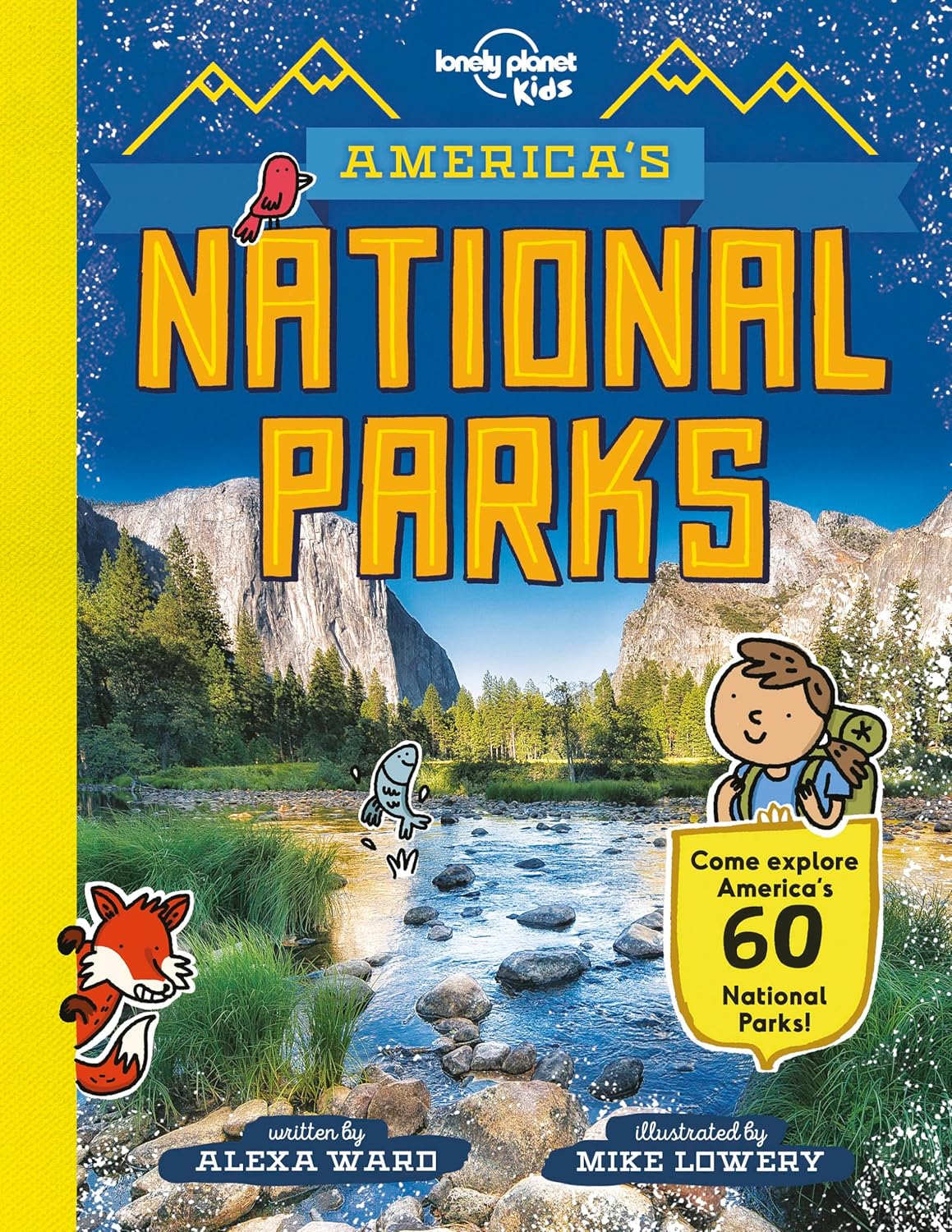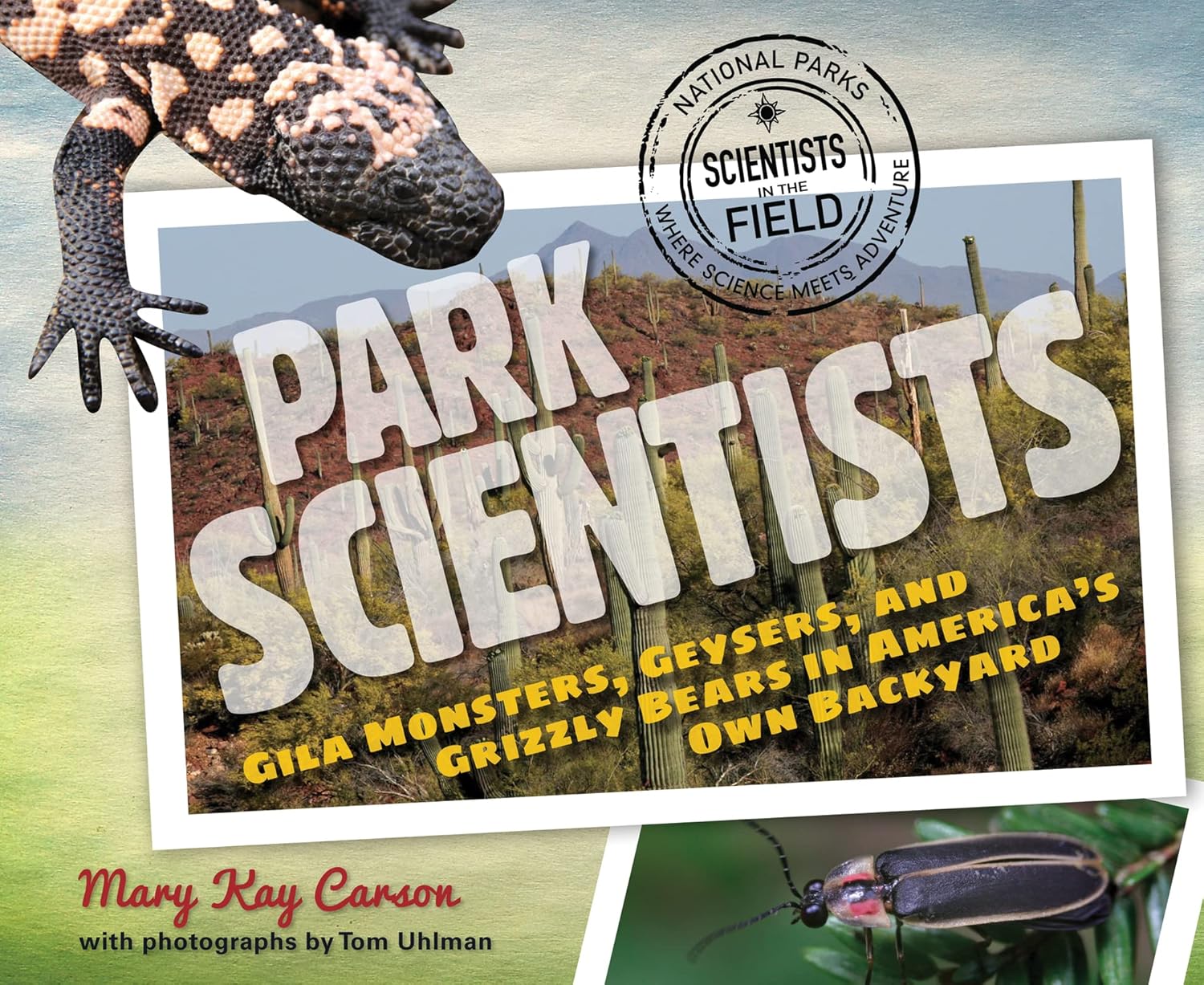This month’s books take readers on a tour of the 63 national parks of the United States. Here are some ideas for using these books in the classroom to study amazing wildlife, breathtaking landscapes, important cultural traditions, and conservation!
 Lonely Planet Kids America’s National Parks written by Alexa Ward and illustrated by Mike Lowery
Lonely Planet Kids America’s National Parks written by Alexa Ward and illustrated by Mike Lowery
This lively, visually stunning guide covers all 63 national parks (including the newest), with jaw-dropping photography, quirky illustrations, fun facts, thematic spreads (e.g., “Parks at Night”), and a conversational tone parents and kids both enjoy. Packed with history, tips, and secrets, it’s a dynamic and immersive read for aspiring young adventurers.
Classroom Activity
Map out the ultimate National Park roadtrip! Provide U.S. maps to students and have them pick five national parks they want to visit. Ask students to plot their chosen parks on the map, writing the name of the park. Then have students select one interesting fact about each park’s wildlife from the book and write that under the name. Finally have students include the reason why they chose the park and what they want to see there.

The Unlikely Hero: The Story of Wolf 8 (Young Readers Edition) by Rick McIntyre and David A. Poulsen
Biologist Rick McIntyre has teamed up with YA author David Poulsen to bring to life the reintroduction of wolves into Yellowstone National Park. This action-packed nonfiction story follows the life of Wolf 8 as he fends off grizzly bears, adopts a litter of pups, and helps his family to survive. (In keeping with the conventions of scientific research, all the wolf characters are identified with numbers instead of names.) The scenes in the book are based on McIntyre’s own observations, and readers will find themselves rooting for this underdog on his journey to become an alpha wolf.
Classroom Activity
Readers follow Wolf 8 from a young pup as he grows and learns in Yellowstone National Park. Ask students to map out his adventures in a chronological timeline. Students can show the events that shape his life in the park, and can write descriptions and draw pictures to show each important moment.

Park Scientists: Gila Monsters, Geysers, and Grizzly Bears in America’s Own Backyard written by Mary Kay Carson with photographs by Tom Uhlman
National parks serve as “natural laboratories” and “living museums” that offer unique possibilities for scientific research. This book follows in the footsteps of real-life biologists, ecologists, geologists, herpetologists, and citizen scientists in three different national parks: Yellowstone, Saguaro, and Great Smoky Mountains. Aspiring scientists will learn what makes geysers erupt, what happens when bears hibernate, how Gila monster venom can be used, and more.
Classroom Activity
Ask students to consider this: What if you were one of the scientists involved in research at a national park? What would you do and what would you want to learn? Students can imagine they are part of the team of biologists, ecologists, geologists, herpetologists, or citizen scientists described in this book. ell students to write a short story about their work, how they felt doing their research, and what they hope to discover.Students should use details from the book and incorporate them into their fictional stories.

Karen Latchana Kenney is a children’s author and editor who loves creating all kinds of STEM books and classroom content. Find her at https://www.karenlatchanakenney.com/.

